Discover the Timeless Beauty of Qixia Temple: A Complete Travel Guide
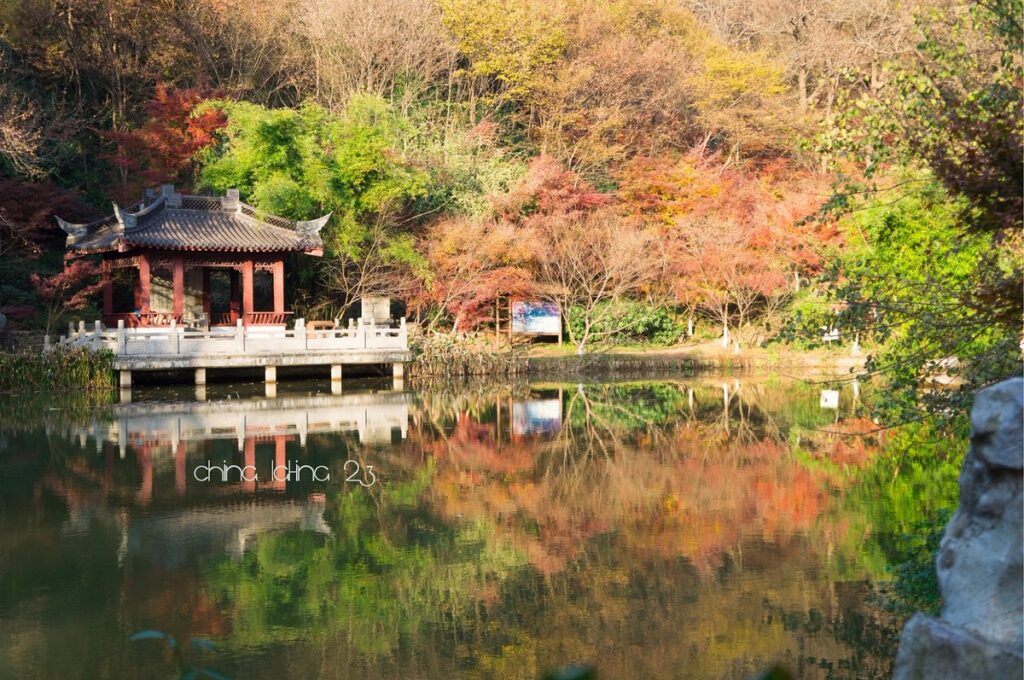
An Essential Guide to Visiting Qixia Temple
Nestled at the foot of the picturesque Qixia Mountain, the Qixia Temple (栖霞寺) offers visitors a remarkable blend of spirituality, stunning landscapes, and historical significance. One of its most unique features is the breathtaking array of autumn foliage that transforms the temple grounds into a vibrant canvas of red and gold, attracting photographers and nature lovers alike. As you explore this ancient site, which dates back to 489 AD, you’ll encounter intricately carved Buddha statues, serene lakes, and panoramic views of the Yangtze River that make for an unforgettable experience.
In this essential guide, we will take you through everything you need to know for your visit to Qixia Temple. From practical tips on how to get there and the best times to visit, to highlights of the temple’s architectural wonders and recommended hiking trails, we’ve got you covered. Whether you’re a seasoned traveler or a first-time visitor, this guide will ensure you make the most of your journey to one of Nanjing’s most cherished cultural landmarks.
In This Guide
- An Essential Guide to Visiting Qixia Temple
- The Rich History and Legends of Qixia Temple
- Main Highlights: What You Absolutely Can’t Miss
- Planning Your Visit: A Practical Guide
- Tickets: Prices, Booking, and Tips
- How to Get There: A Complete Transportation Guide
- Local Cuisine and Accommodation Nearby
- Frequently Asked Questions
- Final Thoughts on Your Trip
The Rich History and Legends of Qixia Temple
A Glimpse into Antiquity: The Foundation of Qixia Temple
Nestled at the base of Qixia Mountain in Nanjing, Qixia Temple boasts a history that stretches back over 1,500 years. Originally constructed in 489 AD during the Southern Dynasties period, it served as a center for Buddhist learning and practice. However, the temple faced numerous challenges throughout its long history, including destruction during warfare, which led to several reconstructions. The most significant revival occurred in the Qing Dynasty, around a century ago, which marked a new chapter for this venerable institution.
Architectural Marvels and Historical Relics
As you wander through the temple grounds, you’ll encounter several remarkable structures that tell the story of its storied past. One of the most prominent is the Sarira Pagoda, an impressive 18-meter tall octagonal stone structure dating back to 945 AD. This architectural gem stands as a testament to the craftsmanship of the era and is a focal point for visitors and worshippers alike.
Another highlight is the Thousand Buddhas Grotto, which dates back to the temple’s founding in 489 AD. This small-scale temple features over 500 serene Buddha statues, with the central shrine, the “Three Buddhas Temple,” housing three monumental statues each standing at an impressive 11 meters tall. These relics are not just artistic achievements; they are a reflection of the spiritual devotion that has characterized Qixia Temple through the centuries.
Legends of the Temple
The legends surrounding Qixia Temple add an enchanting layer to its rich history. One such tale speaks of the temple’s namesake, the Qixia (literally “Resting in the Clouds”) spirit. According to local lore, this spirit would guide travelers who sought solace or enlightenment within the temple’s walls. Many pilgrims have reported feeling an otherworldly presence, especially during misty mornings when the mountain is shrouded in fog, making it seem as if the temple is indeed resting among the clouds.
Another captivating legend involves a renowned monk associated with the temple during the Tang Dynasty. It is said that this monk possessed the ability to foresee the future. As the story goes, he predicted the rise and fall of dynasties, earning him both reverence and fear. His predictions attracted countless followers, who flocked to the temple seeking guidance and answers.
A Sanctuary Through the Ages
Throughout its long and tumultuous history, Qixia Temple has remained a sanctuary for those seeking spiritual enlightenment, peace, and inspiration. The beauty of its landscape, combined with the towering presence of ancient trees and vibrant red maples, creates a serene atmosphere that has captivated generations of visitors.
Today, Qixia Temple stands not only as a historical site but also as a vibrant hub of Buddhist practice. The recent investments in infrastructure and landscaping reflect a commitment to preserving the temple’s legacy while making it accessible to a new generation of visitors. Whether you are drawn by its historical significance, architectural beauty, or spiritual allure, Qixia Temple offers a profound glimpse into the heart of Chinese culture and history.
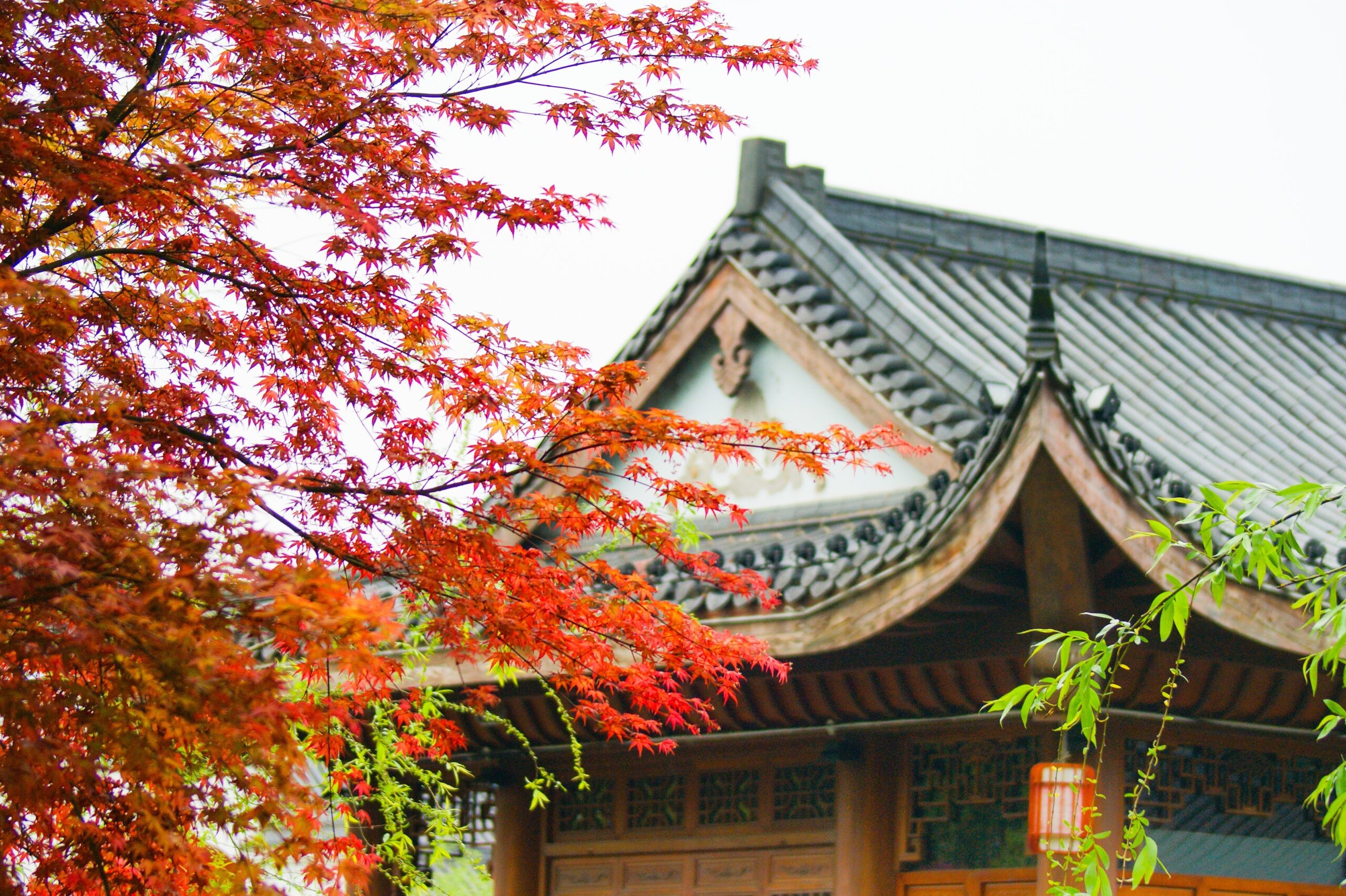
Qixia Temple.
Main Highlights: What You Absolutely Can’t Miss
1. The Grand Qixia Temple Complex
As you enter the Qixia Temple complex, you’re greeted by an impressive array of ancient architecture and serene landscapes. Originally established in 489 AD, this temple exhibits a blend of historical significance and stunning design. Marvel at the intricate carvings and ancient relics that tell tales of the temple’s storied past. Tip: Allocate some time to wander through the various halls and chambers; each one offers a unique glimpse into Buddhist traditions and history.
2. The Sarira Pagoda
Standing tall at 18 meters, the Sarira Pagoda is a remarkable five-story stone structure dating back to 945 AD. This octagonal masterpiece is not only an architectural wonder but also a spiritual beacon. Visitors often leave offerings and prayers at its base, creating a palpable sense of reverence. Tip: Capture the best photographs in the early morning or late afternoon when the sunlight casts a golden hue over the pagoda.
3. The Thousand Buddhas Grotto
For an unforgettable experience, don’t miss the Thousand Buddhas Grotto, which houses over 500 intricately carved Buddha statues. Dating back to the temple’s founding, this grotto showcases the artistic craftsmanship of the era. The largest shrine, known as the “Three Buddhas Temple,” features three towering statues, each standing at 11 meters tall. Tip: Bring a flashlight if you’re planning to explore the darker corners of the grotto for a closer look at the carvings.
4. Scenic Hiking Trails
Surrounding the temple are picturesque hiking trails that lead you up the majestic Qixia Mountain. As you ascend, you’ll be enveloped in vibrant foliage, especially during autumn when the Japanese red maples burst into flames of crimson. The trails can be steep and uneven, so wear sturdy shoes and take your time. Tip: If hiking isn’t your style, a tram is available to carry you around the mountain for a more leisurely experience.
5. Panoramic Views from the Summit
Upon reaching the summit of Qixia Mountain, prepare for breathtaking panoramic views of the Yangtze River and Nanjing cityscape. The sight of countless ships navigating the river, alongside the impressive architecture of the city, is truly captivating. Tip: This is the perfect spot for sunset photography; arrive late in the day to witness the sky transition into a beautiful palette of colors.
6. The Serene Lakes
Take a moment to stroll around the tranquil lakes located at the base of the mountain. These serene bodies of water are surrounded by lush greenery and provide a peaceful retreat from the bustling temple complex. It’s an ideal place for reflection or to simply enjoy nature. Tip: Bring a picnic to enjoy by the lakeside, but be sure to carry out any trash to keep the area pristine.
7. Local Cuisine and Shopping
After exploring the spiritual and natural beauty of Qixia Temple, indulge in some local cuisine at the nearby eateries. Here, you can taste authentic Hunan dishes and vegetarian options that cater to temple visitors. Additionally, local shops offer unique souvenirs, including handcrafted items and religious artifacts. Tip: Try to visit during off-peak hours to avoid the crowds and fully enjoy your dining experience.
These highlights at Qixia Temple promise a blend of cultural enrichment, stunning scenery, and memorable experiences that are sure to resonate long after your visit. Whether you’re a history buff, a nature lover, or a spiritual seeker, Qixia Temple offers something special for everyone.
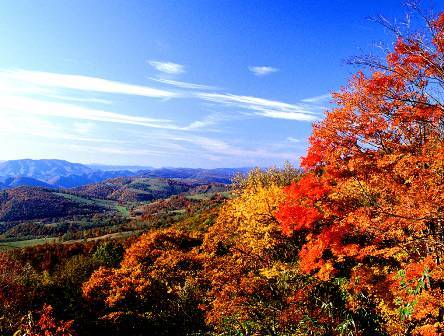
Qixia Temple.
Planning Your Visit: A Practical Guide
Best Time to Visit
The ideal time to visit Qixia Temple is during the autumn months, particularly in November, when the Japanese red maples are in full color. This offers a stunning backdrop for photography and a serene atmosphere for exploration. Weekdays are generally less crowded than weekends, so if possible, plan your visit during the week to avoid large crowds. The temple is open year-round, from 8:00 AM to 6:00 PM, but be mindful of public holidays and festivals, as these can draw larger crowds.
Recommended Itinerary
A half-day visit is typically sufficient to explore the key attractions at Qixia Temple. Here’s a suggested itinerary:
- Arrival: Aim to arrive by 8:30 AM to get a head start on the day.
- Temple Exploration: Begin with a stroll through the main temple complex, admiring the intricate architecture and significant Buddha statues.
- Scenic Walk: Take a leisurely walk around the picturesque lakes and gardens located at the base of the mountain.
- Hike Up the Mountain: If you’re feeling adventurous, hike up the mountain trails, stopping at viewpoints along the way for photos. Don’t miss the breathtaking views of the Yangtze River and the surrounding landscapes from the summit.
- Tram Option: If you prefer a more relaxed visit, consider taking the tram down after your exploration.
- Lunch: After your visit, enjoy a meal at one of the local restaurants near the entrance.
Photography Tips
- Golden Hour: The best time for photography is during the golden hour, shortly after sunrise or before sunset, when the light is soft and warm.
- Autumn Foliage: If visiting in autumn, be sure to capture the vibrant hues of the maple leaves. The area around the temple is particularly stunning during this season.
- Diverse Angles: Experiment with different angles and perspectives. Capture the grand architecture of the temple, the serene lakes, and the expansive views from the mountain summit.
- Respectful Shots: Be mindful of the spiritual significance of the site. Avoid using flash in areas where people are meditating or praying.
What to Wear
- Comfortable Footwear: Since you will be exploring and possibly hiking, wear comfortable shoes with good grip. Sneakers or hiking shoes are recommended.
- Layered Clothing: The weather can vary, so dress in layers. Mornings can be cool, while afternoons may warm up. A light jacket is advisable, especially in autumn.
- Sun Protection: Don’t forget your sunglasses, a hat, and sunscreen, as you’ll be outdoors for extended periods.
Insider Tips
-
Guided Tours: Consider hiring a local guide to enhance your experience. They can provide insights into the history and significance of the temple and its surroundings.
-
Avoiding Crowds: If you want to experience a quieter visit, try to arrive at opening time or on a weekday. The temple can get quite crowded, especially on weekends.
-
Local Delicacies: Take the opportunity to try local Hunan cuisine at nearby restaurants. Look for vegetarian options, as many dishes can be made with local produce.
-
Cultural Etiquette: Be respectful of the temple’s spiritual atmosphere. Keep noise to a minimum and avoid climbing on or touching statues.
-
Transport Tips: If using public transport, take Subway Line 2 to avoid traffic congestion. Taxis and ride-sharing services are also available, but having a guide can be beneficial for navigating the area.
With this practical guide, you’re well-equipped to make the most of your visit to Qixia Temple, immersing yourself in its beauty and tranquility. Enjoy your journey!
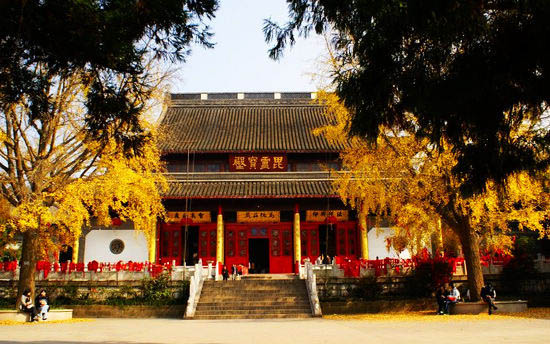
Qixia Temple.
Tickets: Prices, Booking, and Tips
Visiting Qixia Temple is a remarkable experience that combines the beauty of nature and rich cultural history. To make your visit as seamless as possible, here’s everything you need to know about ticketing, prices, booking, and some handy tips.
Ticket Information
| Ticket Type | Price (CNY) | Includes |
|---|---|---|
| Adult Ticket | 30 | Access to the temple complex and hiking trails |
| Child Ticket (under 1.2m) | Free | Access to the temple complex and hiking trails |
| Senior Ticket (over 60) | 15 | Access to the temple complex and hiking trails |
| Tram Ticket (optional) | 20 (one way) | Tram ride around the mountain |
Booking Your Tickets
Tickets for Qixia Temple can be purchased at the entrance, but it is highly recommended to book in advance, especially during weekends and holidays when the site tends to get crowded. You can book tickets through various online travel platforms or directly via local tour operators. Some hotels in Nanjing may also offer booking services.
Tips for a Great Visit
-
Go Early: To avoid the crowds, try to arrive right when the temple opens at 8:00 AM. This will give you a chance to enjoy the serene atmosphere before the influx of visitors.
-
Consider a Guide: Having a personal guide can enhance your experience, providing insights into the temple’s history and helping with transportation logistics.
-
Plan for Hiking: If you intend to hike to the summit, wear comfortable shoes and be prepared for steep and uneven paths. There’s a tram option for those who prefer a less strenuous experience.
-
Check Weather Conditions: If you’re visiting during autumn, don’t miss the stunning views of the Japanese red maples, which are particularly picturesque.
-
Transport Considerations: After your visit, getting a taxi back to the metro station can be challenging. Having a guide or pre-arranging transportation can save you time and hassle.
By planning ahead and being mindful of peak visiting times, you can ensure a memorable visit to Qixia Temple, where history and natural beauty await!
How to Get There: A Complete Transportation Guide
Reaching Qixia Temple: Your Transportation Guide
Nestled at the foot of Qixia Mountain in Nanjing, Qixia Temple is a historical gem that attracts visitors from all over the world. Whether you’re planning a day trip or a longer stay in the region, navigating your way to this picturesque temple can be straightforward. Here’s a comprehensive guide on how to get there and explore the scenic area.
From the Nearest Major City: Nanjing
By Subway:
1. Start at Nanjing Metro Line 2: Head to the nearest subway station and board Line 2 (the green line).
2. Transfer at Xuanwumen Station: Change to Line 1 (the red line) to reach the Nanjing South Railway Station.
3. Catch a Bus or Taxi: From the station, take bus number 16, 32, or 57, which will take you directly to Qixia Temple. Alternatively, taxis are readily available and can take you there in about 30 minutes, depending on traffic.
Estimated Time: 1-1.5 hours
Cost: Subway fare is typically around ¥2-¥5 (0.30-0.75 USD), and bus tickets are similarly priced. A taxi ride may cost approximately ¥50-¥80 (7-12 USD).
By Taxi or Ride-Hailing Service:
For a direct route without transfers, consider taking a taxi or using a ride-hailing app like Didi. This option is particularly convenient if you’re traveling with family or have luggage.
Estimated Time: 30-45 minutes
Cost: Expect to pay around ¥50-¥80 (7-12 USD), depending on traffic conditions.
By Car:
If you’re renting a car, Qixia Temple is easily accessible via the G2501 expressway. Look for signs directing you to Qixia District.
Estimated Time: 30 minutes
Cost: Variable, depending on rental fees and fuel prices.
Getting There from Nearby Cities
From Yangzhou:
– By Train: Take a high-speed train from Yangzhou to Nanjing, which takes around 1 hour. Once in Nanjing, follow the subway or taxi options detailed above.
From Suzhou:
– By Train: High-speed trains from Suzhou to Nanjing will take about 1.5 hours. Upon arrival, follow the local transportation options to reach Qixia Temple.
Getting Around the Scenic Area
Once you arrive at Qixia Temple, the area is designed for pedestrian exploration. Here’s how to navigate the site effectively:
Walking Paths:
– The temple complex features well-maintained paths that lead through various temples, statues, and scenic lakes. Enjoy a leisurely stroll, taking in the rich history and stunning architecture.
Hiking Trails:
– For those seeking a bit of adventure, hiking trails lead up Qixia Mountain. The paths can be steep and uneven, so comfortable footwear is recommended. Don’t forget your camera for breathtaking views of the Yangtze River from the summit!
Tram Service:
– If you prefer not to hike back down, a tram service is available to transport visitors from the mountain summit back to the base. This is a great option for families or those looking to conserve energy.
Local Transportation:
– After your visit, getting a taxi back to the metro station or your accommodation can be a bit tricky, especially during peak times. Having a guide or a translation app can help facilitate this process.
Tips for a Smooth Journey
- Timing: To avoid crowds, try visiting on weekdays or early in the morning.
- Language: English is not widely spoken in this area, so having basic Chinese phrases or a translation app can be beneficial.
- Cash: Some local shops and restaurants might not accept credit cards, so it’s wise to carry some cash in RMB.
By following this guide, you’ll find that reaching Qixia Temple and exploring its stunning surroundings is a rewarding experience, rich with culture and natural beauty. Enjoy your visit!
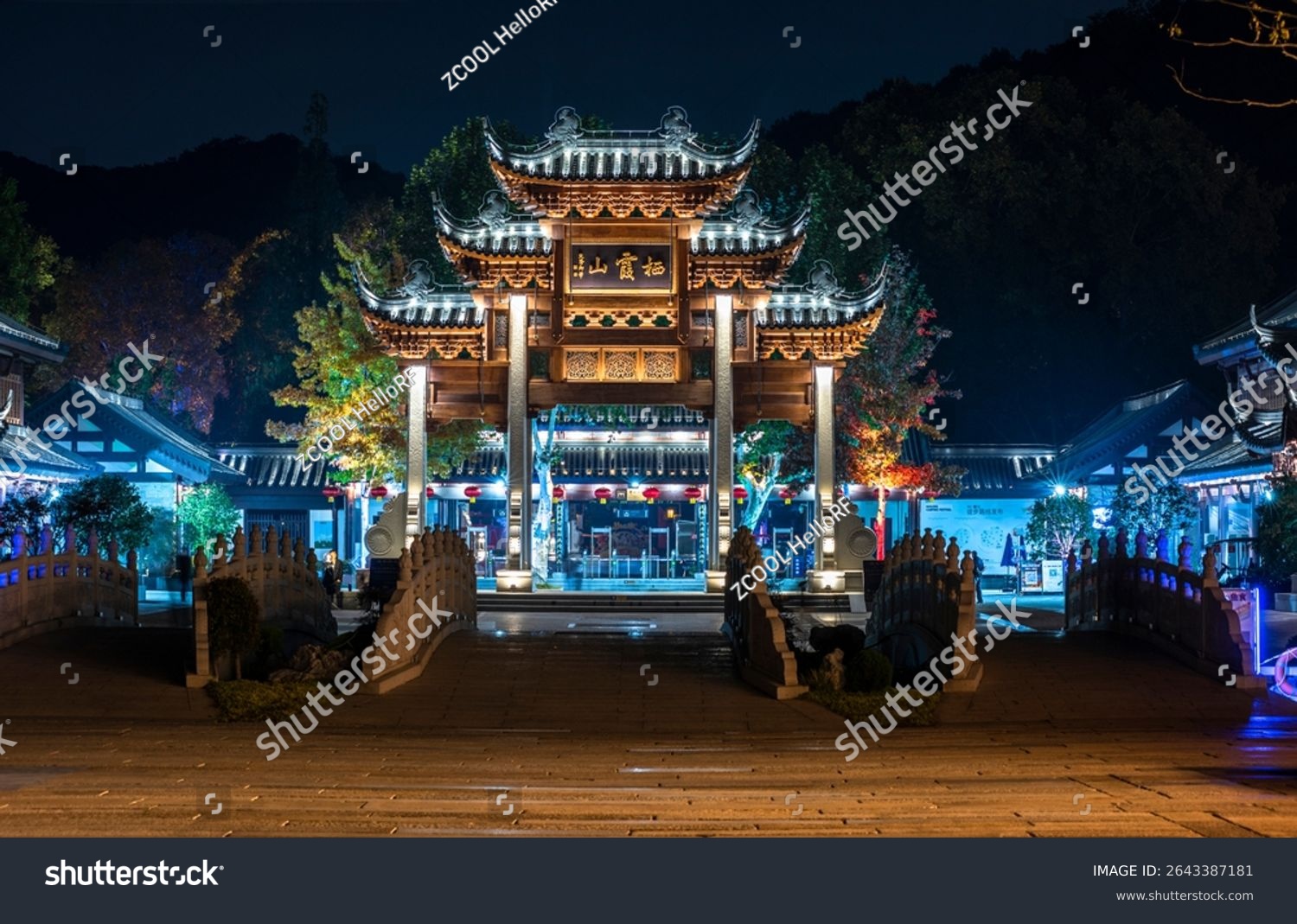
Qixia Temple.
Local Cuisine and Accommodation Nearby
Nestled at the foot of Qixia Mountain, the area surrounding Qixia Temple offers a rich tapestry of local cuisine and accommodation options that cater to a variety of preferences and budgets. After exploring the temple’s stunning architecture and the breathtaking views from the summit, indulge in some local flavors and find a comfortable place to rest.
Local Cuisine
-
Nanjing Salted Duck (盐水鸭)
A quintessential dish from Nanjing, this delicately flavored duck is brined with a mix of spices and served chilled. The meat is tender and juicy, often garnished with a sprinkle of scallions, making it a perfect snack or appetizer after a day of sightseeing. -
Sijo (狮子头)
These giant meatballs, made from minced pork, are a beloved specialty in the Jiangsu province. The meat is mixed with water chestnuts for crunch and served in a savory broth. Often accompanied by bok choy or other greens, Sijo is both comforting and nourishing. -
Duck Blood Soup (鸭血粉丝汤)
A unique dish that may surprise some, this soup features duck blood, vermicelli noodles, tofu, and a medley of vegetables in a flavorful broth. It’s a warming meal, perfect for replenishing energy after hiking. -
Hunan-Style Spicy Tofu (湘味豆腐)
For those who enjoy a kick, this dish features soft tofu stir-fried with Hunan-style spices, resulting in a delightful combination of flavors and textures. It’s often served with steamed rice, making it a satisfying vegetarian option.
Accommodation Nearby
-
Luxury: InterContinental Nanjing
For travelers seeking an upscale experience, the InterContinental Nanjing boasts stunning views of the Yangtze River and a variety of amenities including a spa, fine dining, and spacious, elegantly appointed rooms. It’s a perfect retreat after a day of exploration. -
Boutique: The Nanjing Grand Hotel
This charming boutique hotel combines modern comforts with traditional Chinese decor. It features cozy rooms and a rooftop terrace with picturesque views. The hotel’s restaurant offers a delightful selection of local dishes, ensuring guests experience the culinary essence of Nanjing. -
Budget: Nanjing 123 Youth Hostel
For those traveling on a budget, the 123 Youth Hostel provides a friendly atmosphere and basic yet comfortable accommodations. It’s conveniently located near public transport, making it easy to access attractions like Qixia Temple. The hostel also organizes group tours and activities, perfect for solo travelers or those looking to meet new friends.
Whether you’re savoring local delicacies or resting in a cozy bed after a day of adventure, the area surrounding Qixia Temple offers a delightful blend of cultural and culinary experiences that will enhance your visit to Nanjing.
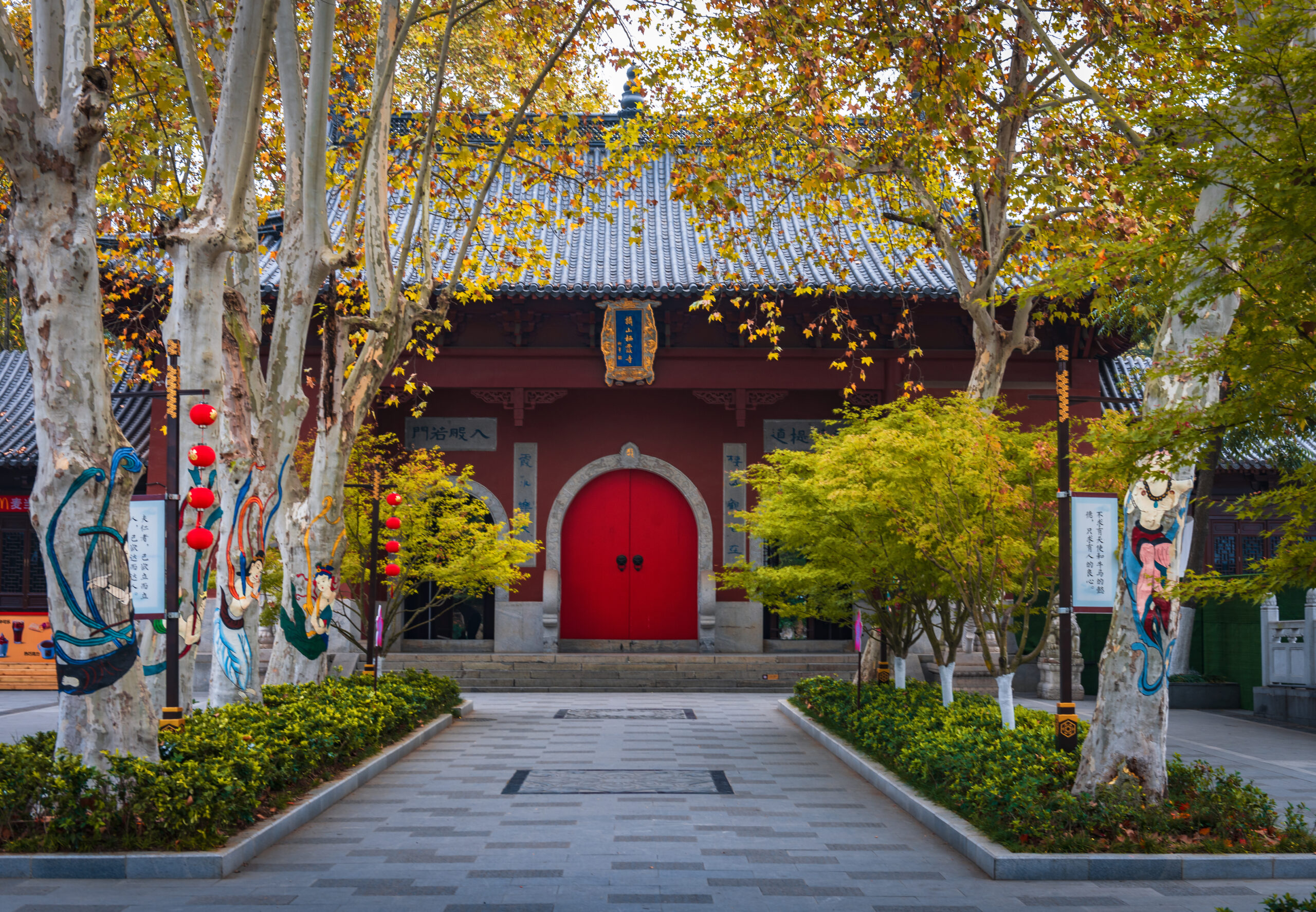
Qixia Temple.
Frequently Asked Questions
Frequently Asked Questions about Qixia Temple
-
Is Qixia Temple suitable for children and the elderly?
Yes, Qixia Temple is generally family-friendly, but it’s important to note that the pathways can be steep and uneven in certain areas. Families with children will enjoy exploring the temple complex, while elderly visitors should be cautious, especially if they have mobility issues. A tram is available for those who prefer not to hike up the mountain. -
How much time should I plan for my visit?
A visit to Qixia Temple typically requires around half a day. This allows ample time to explore the temples, enjoy the beautiful views from the mountain summit, and take pictures of the stunning scenery, particularly the Japanese red maples in the fall. If you plan to hike extensively or enjoy the surrounding areas, you might want to allocate a full day. -
Are there English signs and guides available?
While some signs are in English, the majority are in Chinese. It’s advisable to hire a local guide who can provide insights and help navigate the area if you don’t speak Chinese. Many guides can be arranged through local hotels or tour companies. -
What is the best time to visit Qixia Temple?
To avoid large crowds, consider visiting on weekdays, especially early in the morning or later in the afternoon. The temple can get quite busy on weekends and public holidays. The fall season (October to November) is particularly beautiful due to the colorful foliage of the Japanese red maples. -
Is there an entrance fee?
Yes, there is an admission fee to enter Qixia Temple. The ticket prices may vary, so it’s best to check in advance. The fee typically includes access to the temple grounds, but some specific attractions might have additional charges. -
Are there dining options nearby?
Yes, there are several local restaurants and snack shops near the entrance of Qixia Temple where you can enjoy a meal or refreshments. However, options may be limited, so be prepared for a more rustic dining experience. For a more extensive selection, consider dining in Nanjing before or after your visit. -
What should I wear when visiting Qixia Temple?
Comfortable, weather-appropriate clothing and sturdy shoes are recommended, especially if you plan to hike. The temple is an active religious site, so modest attire is appreciated. Avoid wearing shorts and sleeveless tops out of respect for the local customs. -
Can I take photographs at Qixia Temple?
Yes, photography is allowed throughout Qixia Temple. Visitors are encouraged to capture the breathtaking views, intricate temple architecture, and the serene atmosphere. However, be respectful of the worshippers and avoid taking pictures in areas where it may be disruptive.
Final Thoughts on Your Trip
As your journey through Qixia Temple comes to a close, you’ll find yourself enriched by the serene beauty and historical depth that this sacred site embodies. Nestled against the backdrop of majestic mountains, this temple complex invites you to explore its intricate architecture, awe-inspiring Buddha statues, and the vibrant hues of Japanese red maples that transform the landscape, especially in autumn.
Whether you choose to hike the winding paths to the summit or take a leisurely tram ride, the panoramic views of the Yangtze River and the bustling city of Nanjing are sure to leave a lasting impression. The blend of natural beauty and spiritual significance creates a unique experience that resonates deeply with all who visit.
So, as you reflect on your time at Qixia Temple, remember that this ancient site is not just a destination but a journey into the heart of Chinese culture and spirituality. Embrace the tranquility and inspiration it offers, and carry the memories of this remarkable place with you as you continue your travels. Each step taken here is a step into a story that spans centuries, waiting for you to share it with the world. Safe travels!